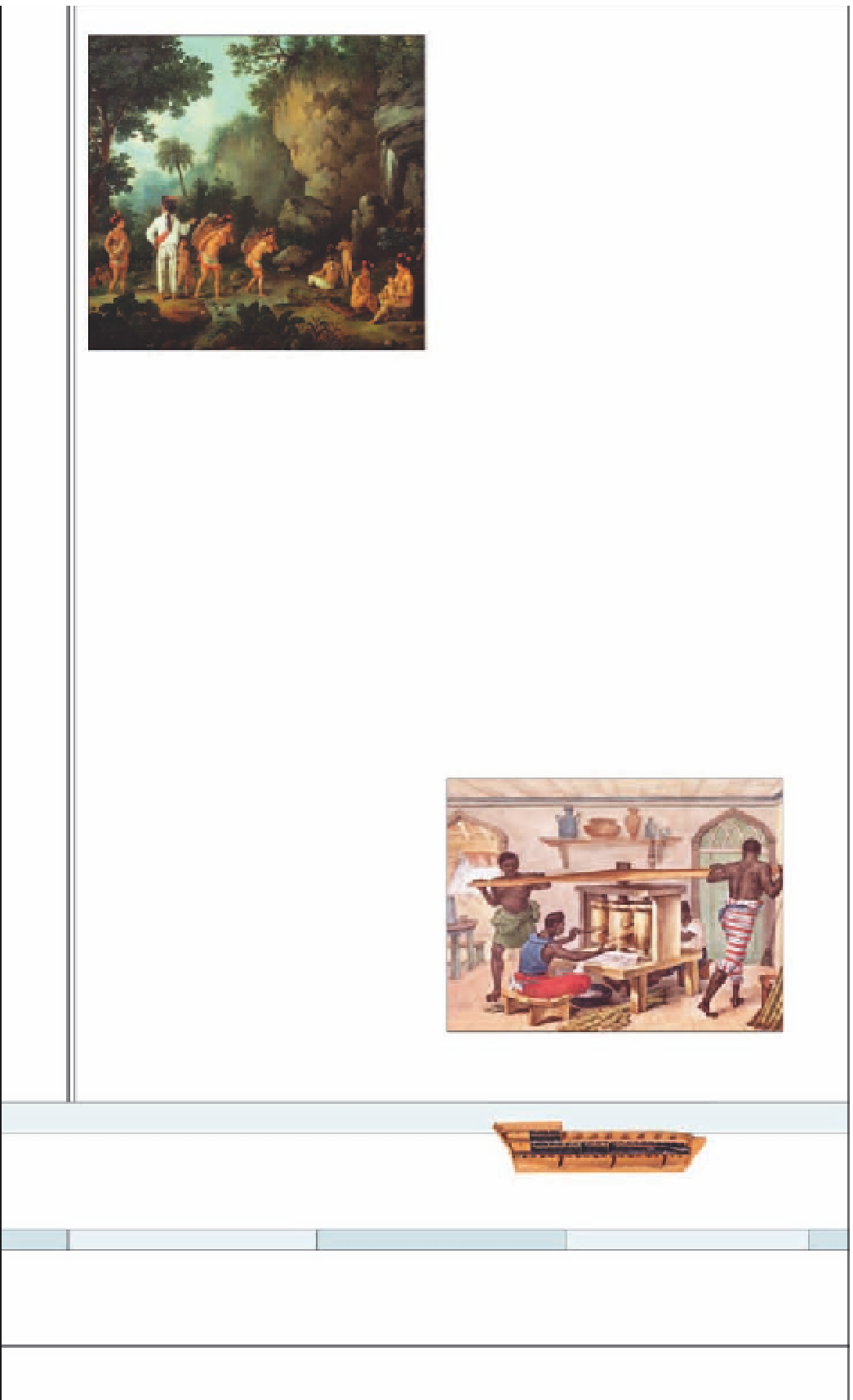Travel Reference
In-Depth Information
engenhos
(plantations) along the
northeastern coast soon became the
base of the Brazilian economy.
Salvador and Olinda emerged as key
centers for the sugar trade.
The hunting-gathering indigenous
people, however, were found to be
unsuitable slaves for the plantations.
They were better suited for the brazil
wood trade, and were made to log
and transport timber instead. From
the 1550s, the landowners turned to
Africa, importing millions of slaves.
COLONIAL WARS
While the Portuguese Crown was still
struggling to consolidate its hold on
Brazil, the Dutch and French forces
continued to encroach on its terri-
tories. In 1555, the French had made
inroads into the bay of Guanabara,
establishing their own colony, French
Antarctic. Portuguese forces seized
the colony in 1565, and founded a
new city, Rio de Janeiro.
Throughout the first half of the 17th
century, French and Dutch privateers
continued to plunder the coastal
cities. With a powerful fleet, the Dutch
offered a greater challenge. In 1624,
the Dutch captured Salvador and laid
siege to the city, until the combined
Painting showing a group of indigenous Brazilian
slaves at work in a sugar plantation
COLONIZATION & EXPANSION
King João III conferred special
colonial privileges to the
donatários
,
the aristocrats and minor gentry, who
were expected to develop and govern
the
capitanias
on behalf of the
Crown. The
donatários
, however, met
with adverse climatic conditions and
hostile indigenous people. Some of
the
capitanias
were attacked by the
indigenous Brazilians. In 1549, the
Crown was forced to send Tomé de
Sousa as the first governor, who was
assigned the task of protecting the
few remaining captaincies.
SUGAR & THE SLAVE TRADE
Introduced to Brazil in 1532, sugar
replaced the country's first major
export, brazil wood, which was
nearly wiped out as a result of over-
exploitation. Setting up his capital in
Salvador, Tomé de Sousa enlisted the
support of the Jesuits. The indigenous
people who did not convert to
Christianity were enslaved and sent
to work in sugar plantations. As a
result of the high demand for sugar
in Europe, sugar cane grown in
African slaves in a sugar mill, using an early form
of grinder for refining sugar
TIMELINE
1550
African
slaves shipped
to Brazil to
work sugar
plantations
1572
Construction of
Salvador's Catholic
cathedral completed
1532
King João III
divides the land
into 15
capitanias
Slave ship
1554
Jesuits
found São Paulo
1630
The Dutch
occupy Olinda
1500
1550
1600
1650
1549
Salvador
founded by
Tomé de
Sousa
1565
French
Antarctic
destroyed and
Rio de Janeiro
founded
1624
The Dutch
capture Salvador,
laying the city to
seige for the next
nine months
1532
Sugar cane is
introduced to Brazil










































